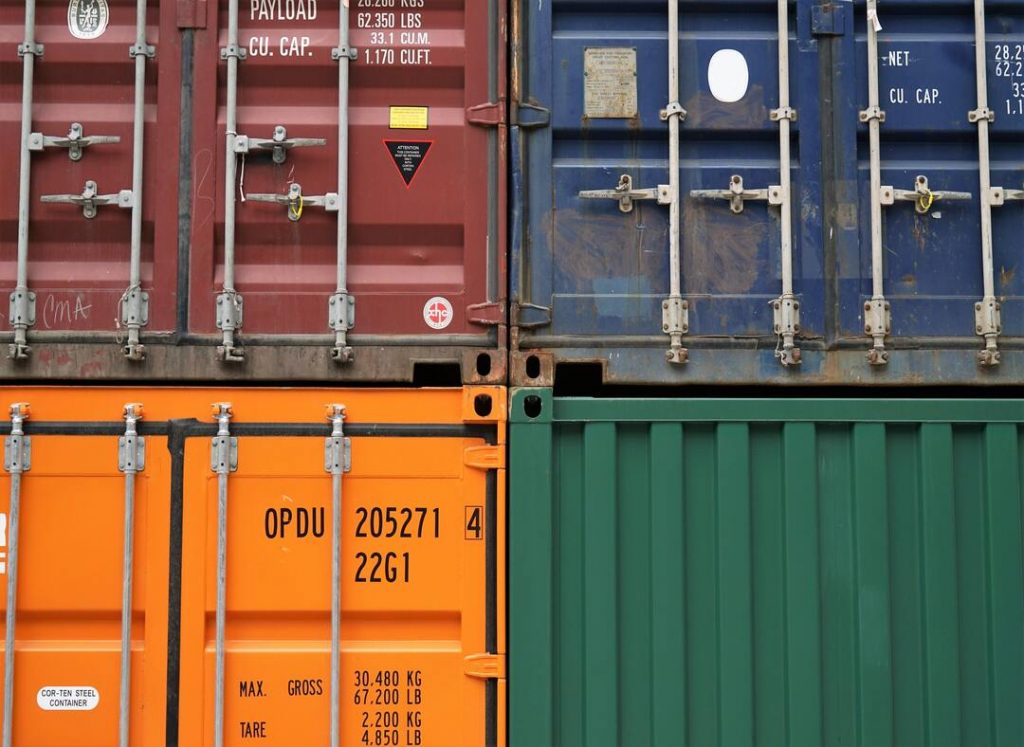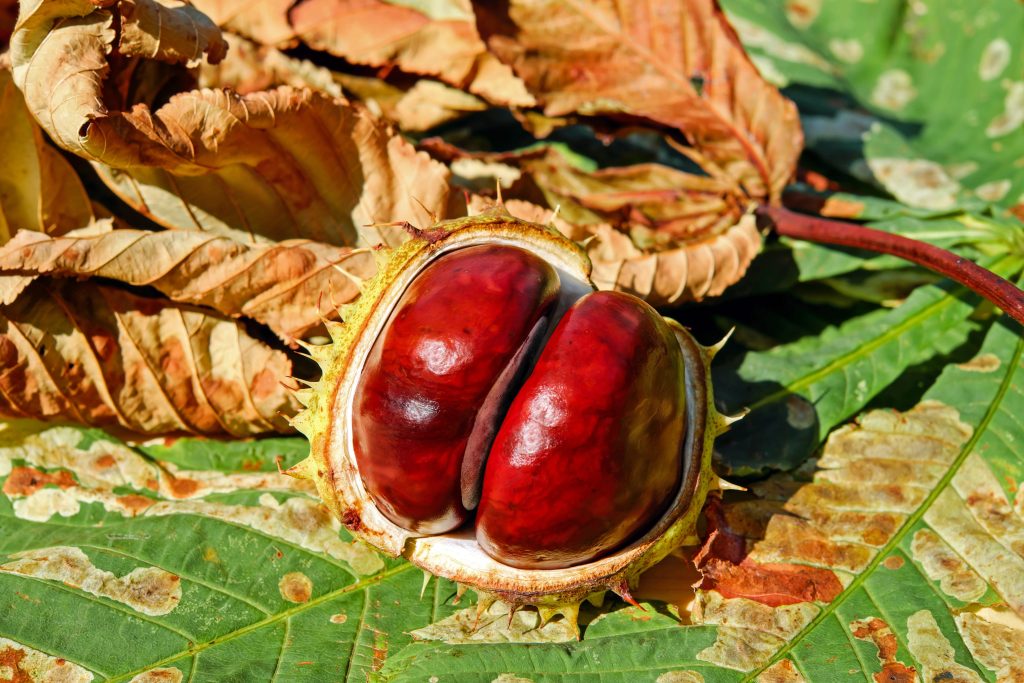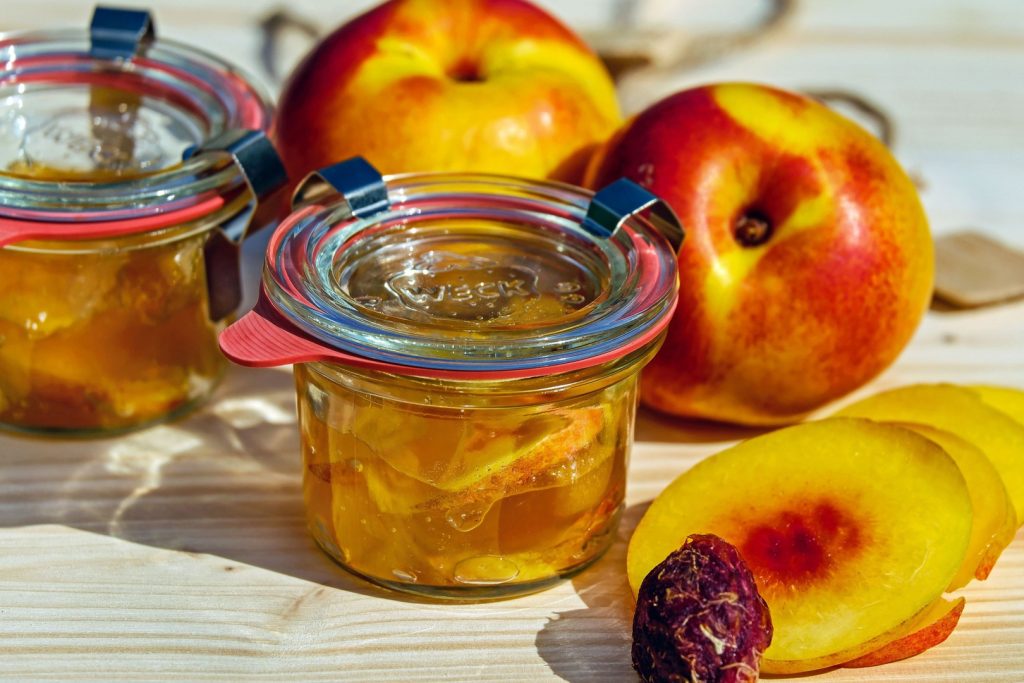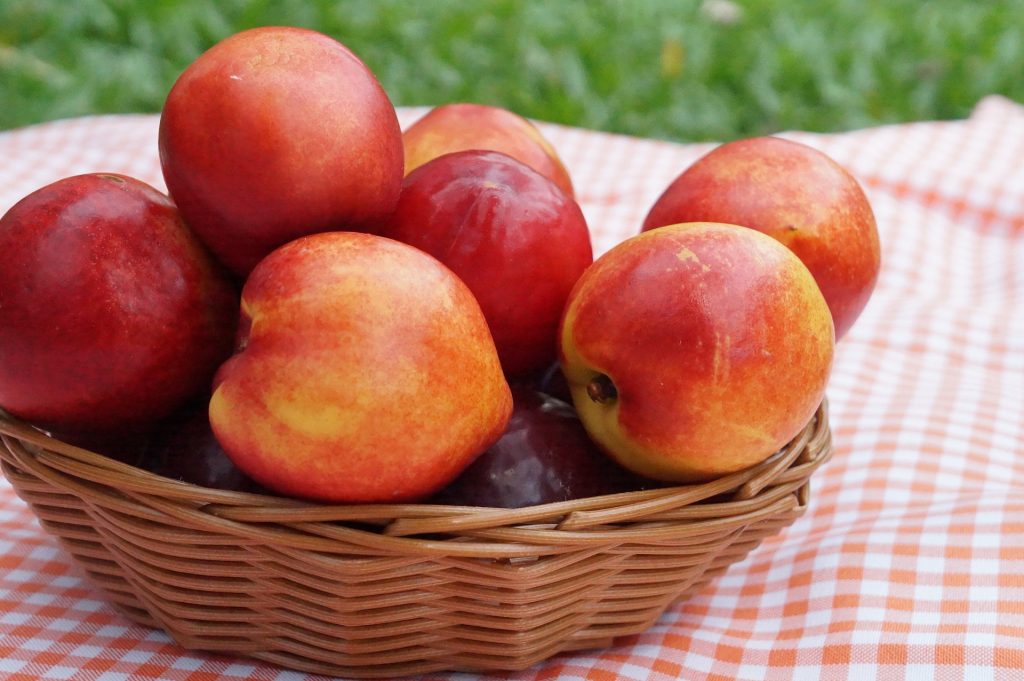Blog
Find articles that matter. From trading to shipping, trends to valuable goods, you can deep dive into everything you need.
Latest Posts
Blog
Containers are the most important tools in the shipping, trading, and transportation industries. These shipping containers are structures that house a range of items that need to be carried from one point to another using a variety of container ships of varying sorts and sizes.
Intermodal shipping containers now play a critical role in the flow of international trade. For example, they account for almost 90% of all marine cargo shipping. "Intermodal" standardized containers allow international shipping firms to carry cargo quickly between ports. They allow smooth transfers between tractor-trailer rigs, train vehicles, cargo aircraft, and marine vessels. They aid in the reduction of expenses associated with several delivery options.
Carriers don't spend valuable time and money unpacking and repacking a freight shipment to transfer it from a boat to a railroad line or a trucking route. They simply transfer the complete packed and secured shipping container. Some containers go through several transfers throughout the supply chain before arriving at their final destination. This short article tries to give useful information on the characteristics and specifications of these often utilized transportation assets.
Container Types & Dimensions
Shipping containers and storage containers can come in many sizes. 20ft and 40ft shipping containers are the most typical container lengths, and 8ft in width as usual. A container's height is typically 8ft 6" and a high cube will have an extra foot to reach 9ft 6".
In almost all circumstances, the sides of a container are corrugated. The depth of the corrugation is normally 1 inch (25mm), which means that the outward width measurement is reduced by 2 inches (50mm) (1 inch on each side). The rear (blank end) is likewise corrugated, and the doors are about 2 inches (50mm) thick, thus the length is reduced by around 3 inches (75mm).
Height is the most significant drop from exterior to inside dimensions. A normal container's floor has an underneath clearance of roughly 6 inches (150mm) and a thickness of 27mm (1.1 inches). As the roof is corrugated, a further 1 inch (25mm) is lost, resulting in an interior dimension that is approximately 8 inches shorter than the exterior – 7ft 10 inches (2.39m). However, this might vary somewhat depending on the floor thickness and building style utilized.
The door height is further lowered by the steel top rail above the door, which is part of the container's structural stability. It is usually 4 inches (10 cm) and decreases the entry height to 7ft 6ins (2.28m), but this can vary slightly either way.
Standard Dry Shipping Containers
Standard containers are the most frequent freight unit for marine transportation since they are durable and multipurpose. These are known as "dry" containers. When fully enclosed, they provide protection against weather conditions. The most frequent sizes are twenty-foot and forty-foot containers. These containers are intended for use on any mode of transportation, whether by water or land.
The ISO standard 6346 specifies the external dimensions, minimum interior container dimensions, and maximum weight (including cargo). However, the tare weight, actual internal container size, and other measurements will vary from model to model and manufacturer to manufacturer.
20-foot Shipping Container
A typical ISO container of 20 feet in length is the most common and is used by ships of all sorts, large and small. The dimensions of a 20-foot container are 6.06 m in length, 2.44 m in width, and 2.59 m in height.
It can transport up to 30,480 kg / 67200 lbs. for common purpose containers and up to 45,000 kg (99,207 lbs.) for flat racks. The payload capacity of a 20-foot refrigerated container is 27,400kg.
40-foot Shipping Container
A 40-foot container has double the volume of a 20-foot container and costs just 15 to 25% more. It creates the most cost-effective shipping container for commodities carried by ship. A 40-foot container has the following dimensions: 12.19 m in length, 2.44 m in width, and 2.59 m in height.
It can transport general-purpose containers with a maximum gross weight of 30,480 kg (67200lbs.) and flat racks with a maximum gross weight of 60,000 kg (123,276 lbs.). And refrigerated containers can carry a maximum gross weight of 35,000 kg (77,161 lbs.).
45-foot Shipping Container
45-foot containers have a slightly higher cubic-foot capacity than 40-foot containers. They provide extra space for the shipper. The dimensions of a 45-foot container are as follows: 13.71 m length, 2.44 m width, and 2.59 m height. The cargo capacity of a 45-foot container is about identical to that of a 40-foot container.
The above specs are examples of widely used containers. The ISO containers' specific container dimensions and capacity may vary based on the manufacturer, the age of the container, and the container owner. Other shipping container sizes available on the market are 8 ft, 10 ft, 53 ft, and 60 ft, which are typically utilized for road and rail transportation.
Many organizations shipping abroad use only this type of container, however, depending on the nature of your goods, you may wish to explore the following freight container types.

High Cube Container
A high cube is almost equivalent to a conventional dry container, except it is about a foot higher and hence has additional storage space. A full container load in a high cube container may accommodate up to 76 cubic meters of freight, compared to 67 cubic meters in a normal container.
A high cube container has the following dimensions:
- Length - either 20'6" (6.25m) or 21'4" (6.50m)
- Width - either 8'0" (2.44m) or 8'6" (2.59m)
- Internal height - either 9'3"(2.82m), 10'0"(3.05m), or 11'5"(3.48m).
Outside dimensions would be the same as any other container. However, all high cubes are 6 inches higher than ordinary ISO shipping containers to allow for additional room within. Therefore an extra 6 inches of height equals 19% more cubic area inside.
Flat Rack Freight Containers
A flat rack freight container is a broad, horizontal metal structure that is attached to a ship's deck using detachable steel locks. They are used to move big and heavy items. It only includes walls or support posts on the ends, allowing freight to be loaded from the top and/or sides. They usually come in three sizes: 20ft (6m), 40ft (12m), and 53ft (16m). The base width is 8 ft (2.4m), and the depth can range from 5 ft (1.5m) to 7 ft (2.1m).
However, most of the time, you won't have to bother about choosing containers for your shipments. You may leave it to your freight forwarder or international shipping company to find an ideal solution. It is, of course, as long as they know what sort of items you want to transport, the weight, dimensions, and volumes of those goods, and any unique needs such as temperature control, insulation, or ventilation.
Pasta is a very nutritious food product that is made by mixing semolina made from hard durum wheat with other ingredients, shaping, and drying. It has a lot of demand in international trade because it is very healthy. The demand for pasta has been growing steadily over the years. The ability to store pasta for a long time, eat it with different types of shapes, and make it quickly and easily is thought to be a big factor in this rise in popularity. Some countries have become exporters, and others have become importers. It is because pasta is made from durum wheat, which is grown in certain parts of the world.
History of Pasta
It is thought that pasta, which is made from wheat, was first used in China in the 1700s BC. In 1292, Marco Polo brought pasta to Italy, which is thought to be the birthplace of pasta. Italy made pasta very quickly, and it was soon made all over Europe, too. In 1789, Italians moved to the United States. They brought pasta with them, and pasta soon became a part of the United States. Italy, which makes the most pasta in the world today, made pasta in places where the climate was suitable. With the rise of technology, this dependence on the weather has changed.
Rise of Pasta
During the Second World War, pasta factories started to be built in countries where Italians lived. This led to pasta being known in many other countries. In 1933, Mario and Guisseppe Braibanti came up with automatic continuous pasta plants. This made pasta making an industrial process for the first time. In this list, we have gathered the leading pasta exporters in the world.
The Leading Countries in Pasta Export
Italy
Pasta has always had a worldwide flavor because its origins aren't just from Italy, which makes sense because it can be made with wheat and water. Some historians think pasta came from Italy, but most think Marco Polo brought it back from his trip to China, where he saw a lot of things. In the east, rice flour was used to make the first pasta, which was a big hit. The pasta was made from hard wheat and made into long strands in Italy.
Italy's Export Numbers
With pasta, Italy came out on top, making $3.6 billion. It is the world's top exporter of pasta. Italy sold $3.02 billion worth of pasta in 2019. It was also Italy's 34th most popular export in the same year. Italy exports pasta to Germany ($453 million), France ($428 million), the US ($391 million), the UK ($376 million), and Spain ($135 million). Italy is the country that sells the most pasta to other countries.
China
The Chinese sold $980.2 million worth of pasta in 2021. When China sold pasta in 2019, it sold 929.87 million dollars’ worth, which is up 0.70% from 923.43 million dollars’ worth in 2018. This makes China the second-largest pasta-selling country in the world. Between 2017 and 2018, the value of China's pasta went up by 6.675% each year. It was the 374th most popular thing that China sold to other countries in the same year. It costs China $177 million to send pasta to Hong Kong. Moreover, The United States, South Korea, Japan, and Canada are the top five countries where pasta is sold. China's pasta exports to Canada, the United Kingdom, and Russia grew the most from 2018 to 2019, with each market adding $11.6 million, $6 million, and $4.62 million.

South Korea
Third place goes to South Korea. They make $792.3 million a year by selling pasta. Because it sells pasta all over the world, it is a very important industry. Over 792.26 million dollars of pasta from South Korea will be exported in 2020, up from about 290 million dollars in 2011. This is a big change. Pasta exports grew by 18.41% between 2017 and 2019. In 2019, South Korea earned $612.14 million in 2019.
South Korea’s Export Numbers
South Korea sold 612.14 million dollars of pasta to other countries, an increase of 10.10 percent from the 555.994 million dollars sold in 2018. Between 2017 and 2018, the value of South Korean pasta went up by 8.067%. There was a big change in the amount of South Korean pasta that was exported each year between 2017 and 2019. This was 18.41%, compared to 12.933% between 2018 and 2019. In 2019, South Korea had a 1.5% share of the world's total pasta exports. In terms of pasta exports, the country is ranked ninth in the world.
Turkey
In 2021, Turkey exported pasta worth $761.3 million, which put it in fourth place in the world market for pasta. Each of the 24 companies that make pasta in Turkey makes about $1 billion a year. Turkey has a big impact on the domestic pasta industry, which is growing quickly. In fact, it makes and sells a lot of pasta. Despite trade quotas set by EU members, Turkey came in second behind Italy in exports. Pasta, which has become popular outside the home, has become more popular at home in recent years. In 2010, Turkey made 606 tons of pasta and had a 5% share of the world's pasta production.
Turkey’s Export Numbers
In 2013, Turkey made 1 million tons of pasta and had a 7% share of the world's pasta production, which is a big increase. While Italy, the United States, and Turkey keep making pasta for export, the rest of the world only makes pasta for home use. Turkey sells 20,000 tons of goods to European Union countries each year. The amount of goods that Italian companies can sell in Europe is limited to 20 tons. When sales to the European Union aren't taken into account, Turkey ranks first in pasta export.
Import Pasta from the Best: Turkish Goods
When someone or a company wants to bring a product from another country, they do a lot of research quickly. When it comes to import, trust and quality are both very important. Turkish Goods helps bring together the valuable products of Turkey with the people who want to buy them around the world. With its experts in quality control and price offer systems, it is the best. To import quality pasta in different forms from Turkey, click here and get the best price offer in 48 hours.
Due to its geopolitical position, Turkey is a country that can trade with every region of the world. Turkey, which is suitable for land, sea, and air transportation, has increased the number of countries it exports to recently. Especially with the export of products with high added value, Turkey expanded its exports to every region of the world. This way, from South America and Middle East countries to Europe and the USA, Turkey increased its exportation.
The coronavirus, which has affected the world in recent years, has started to turn from a pandemic to an endemic. Therefore, Turkey has increased its exports significantly, especially in 2021. So, which are the countries to which Turkey exports the most, and what are the trade relations with these countries?
To Which Countries Has Turkey Exported the Most in Recent Years?
When we look at Turkey's export data, a regular increase in recent years is striking. Turkey's exports reached 225 billion 291 million dollars in 2021 with an increase of 32.8% compared to the previous year. In addition, while the ratio of exports to imports was 77.3% in 2020, it increased to 83% last year.
When we take a glance at the general export rate among countries, Germany takes the first place. Exports to Germany amounted to 19 billion 321 million dollars. Germany was followed by the USA with 14 billion 722 million dollars. The United Kingdom ranked third with 13 billion 704 million dollars. Italy followed the United Kingdom with 11 billion 475 million dollars and Iraq with 11 billion 133 million dollars, respectively. Exports to the first five countries corresponded to 31.2 percent of Turkey's total exports. Turkey has been exporting a significant amount to Israel and Egypt, which are among the Eastern Mediterranean countries recently.
Germany
Turkey's strong historical ties with Germany, the fact that millions of Turks live in Germany, and the largest economy in Europe make Germany a privileged country in exports. Since the 1960s, when intensive economic relations began, Turkey's trade with Germany has grown continuously. To put it in numbers, although the exports, which were 16.6 billion dollars in 2019, decreased to 16 billion dollars in 2020 with the pandemic. However, it reached approximately 18 billion dollars in 2021.
Turkey's exports to Germany in 2021 reached a historical peak of 17 billion 705.4 million dollars with an annual increase of 22.9 percent. The trade volume between Germany and Turkey also rose to a record level with an annual 41.1 billion dollars. So, in which sectors did Turkey export the most? The sectors that Turkey has exported the most to Germany in recent years are heavy industry sectors. Turkey exports to Germany mostly in the automotive, textile, iron and metals, chemical products, and electronic products sectors. In particular, Turkey's investments in the automotive and machinery industry, and improved logistics services have increased exports of value-added products.
The USA
Turkey's economic relations with the USA have increased especially since the 1950s. Turkey's mechanization in agriculture has started agricultural trade between the two countries. Today, trade with the USA is carried out in agriculture, automotive, steel, jewelry, textiles, and other fields. The country with the highest increase in exports in 2021 compared to the previous year was the USA. Turkey's exports to the USA increased by $4.54 billion in 2021. In 2021, total exports amounted to 14 billion dollars. Especially in recent years, agricultural, ship, and yacht products and automotive exports from Turkey to the USA have been increasing.
The United Kingdom
According to the data of the Ministry of Commerce, the United Kingdom has been one of the three countries to which Turkey has exported the most for the last three years. Exports, which were 11 billion 279 million dollars in 2019, reached 11 billion 236 million dollars in 2020 and 13 billion 708 million dollars in 2021. Turkey's exports to the United Kingdom constitute 6.1 percent of its total exports.
The sector to which Turkey exports the most to the UK is automotive. In addition, ready-made clothing, electronic products, precious stones, and jewelry sectors are the sectors that export the most. Especially the UK's exit from the European Union and its orientation to the Eurasian market contributed positively to Turkey's exports.
Italy
The trade between Italy, which has an important position between European and Mediterranean countries, with Turkey is increasing every year. Exports of 8 billion 83 million dollars in 2020 gained momentum in 2021 and reached 11 billion 480 billion dollars. Italy is the fourth country to which Turkey exports the most in 2021. The sector to which Turkey exports the most to Italy is the automotive sector. Other products from the automotive sector include nuts, iron and steel products, mineral oils, and textiles. Turkey's exports to Italy constitute approximately 5.1% of its overall exports. In this process, the companies operating in Istanbul made the most exports to Italy.
Israel and Egypt
Apart from Europe and the USA, Turkey also takes an active role in regional trade. Especially, there is a serious export rate from Eastern Mediterranean countries to Israel and Egypt. While Turkey exported 4 billion 704 million dollars to Israel in 2020, this figure increased to 6 billion 360 million dollars in 2021. Israel's share in Turkey's total export rate was 2.8%. The most exported sectors from Turkey to Israel are automotive, textile, construction materials, metals, and electronic products.
Egypt is one of the most populated Muslim countries. Relations with Egypt are of great importance due to its strong historical ties with Turkey. Moreover, Egypt is an important transit point in the Mediterranean. Therefore, with the development of bilateral relations with Egypt, there was an increase in exports. While Turkey's exports to Egypt were 3 billion 136 million dollars in 2020, this figure increased to 4 billion 523 million dollars in 2021. The sectors that Turkey exports the most to Egypt are textiles, iron and steel, various metal products, and road vehicles.
Reach Every Region of the World with Turkish Goods
As Turkish Goods, we bring you the best quality products of Turkey and the world. We provide agricultural and food products, textile, medical equipment, electrical products, toys, and more. Turkish Goods offers you the best price within 48 hours, allowing you to get ahead in the market. With its high product range, Turkish Goods follows all logistics processes and delivers the products to you. For detailed information, you can review our services.
In the recent decade, Turkey has become a major exporter of a wide range of items. It has emerged as a stable and welcoming place to export and import from, thanks to its rapidly developing economy. 2021 was no different in terms of exports, Turkey exceeded predictions and showed its resilience with a quick recovery from the pandemic. It exported products worth 225 billion dollars all across the world.
In 2021, exports increased by 32.9% year over year. Imports increased by 7.8% year on year. The exports-to-imports coverage ratio increased 5.8% points to 83.1%.
Turkey's exports set all-time highs in all months of 2021, after being struck by the epidemic in the spring of 2020. It hampered trade with Turkey's largest allies. By October, the country's share of global exports had topped 1%, marking. This was another milestone in the country's more than two-decade-long climb.
These statistics were recorded in a variety of different industries which shows a relatively diversified range of exported goods. Now let’s take a look at some of these products in more detail.
Vehicles and Vehicle Parts
Turkey's automobile industry contributes significantly to the country's industrial sector. The Turkish automotive sector has become a vital element of the worldwide network of manufacturing bases, with a cluster of carmakers and parts suppliers. In 2021, Turkey's automobile sector, which has been the country's export champion for 16 years, generated a total of $29.3 billion in overseas sales.
Automobile
The car production of eight global original equipment manufacturers in Turkey has expanded by nearly five times. While the production was 300,000 units in 2002, it reached over 1.3 million units in 2021. This was thanks to a competitive and highly qualified workforce, a dynamic local market, and a suitable geographical position. Turkey's automotive sector grew at a rapid pace, propelling the nation to the 14th biggest automobile producer in the world. And it became the fourth largest in Europe by the end of 2021.
Turkey is also home to a large number of international suppliers. It serves as a production base for more than 250 worldwide suppliers, with 30 of them ranked among the top 50 global suppliers. Automobile manufacturers are increasingly turning to Turkey as a manufacturing base for international sales. This is demonstrated by the fact that in 2021, 74% of Turkey's automobile output was bound to overseas markets. In the same year, Turkey shipped almost 970,000 automobiles to international markets.
Machinery
Turkey's second-largest export industry is machinery. Turkey's machinery exports have reached $23 billion in 2021. The industry accounted for 10% of Turkey's overall exports. These numbers were up 25% as opposed to 2020 exports. Turkey's machinery exports in 2020 were $17.1 billion, down 4% from the previous year due to the novel coronavirus epidemic. But the sector's exports bounced back quickly and rose by 18.3% versus 2019 (pre-pandemic period). Machinery exports have surged 12-fold in the last 17 years. Turkish machinery is used in over 200 countries throughout the world.
Motors
Turkey has over 200 machine product distribution hubs and over 17,000 local and international firms, according to the Turkish Investment Office. Turkish enterprises address the demands of the European region, particularly in the export of major appliances engines.
The Turkish machinery industry places a high value on research and development. The proportion of R&D expenditure to GNP in Turkey continues to rise. With competence in systems engineering, Turkish Machinery promotes digital transformation.
Iron & Steel
The iron and steel industry is the basis for many goods that have an important place in human life and affect daily life. It requires technology and capital-intensive investments and is the locomotive of the metal industry. It provides inputs to many basic sectors from transportation to construction, from agriculture to technology. In addition, it forms the basis for a circular economy as it is recyclable without losing its properties.
Rebar
The steel industry and ferrous & non-ferrous metals broke export records in 2021. While the total annual exports of the sectors exceeded 40 billion dollars, the most significant increase in exports was in the steel sector. The vast majority of these exports were rebars used for construction. Turkish rebars are known for their quality that matches world standards and competitive pricing.
Turkish steel mills' rebar exports during January-November 2021 rose 30% year on year to 6.88 million mt, according to the TUIK data. The revenue generated from those exports was 92% higher at $4.37 billion amid globally higher steel prices.
Clothes and Home Textiles

The garment industry is the most characteristic of Turkey and one of the industries that has seen great development and spread widely around the world. It is a major part of Turkish export volume and this is due to the Turkish textile industry providing high-quality clothes and fabrics, particularly Turkish fabrics because Turkey is an agricultural country. It has extensive cotton cultivation, allowing you to supply it at a reasonable price. And Turkey also includes many significant brands that have gone worldwide, putting it at the forefront of the leading countries in the apparel business. Not only does Turkey produce clothing, but it also produces household textiles such as rugs, towels, and carpets.
Turkish clothes and home textiles reached the level of 20 billion in exports for the first time in 2021. While it had a foreign trade surplus of $18 billion. This showed an increase of 18% compared to last year.
Silk
Silk is one of the oldest fabrics and is synonymous with luxury. It's long-lasting, adaptable, and keeps you cool in hot weather. Silk gives comfort, durability, and elegance when it comes to texture. It is a sustainable fabric with a long history that is derived from one of the cocoons produced by silkworm larvae. When it comes to silk production and commerce, Turkey is among the leaders.
Silk is the 95th most traded product in the world. Turkey is the third-fastest-growing country in silk commerce, with a 61.1 percent increase, accounting for $4.86 million. Turkey is expanding its silk manufacturing, with a $12.8 million export value. Turkish Goods selects the best silk from producers who provide the best value and quality.
Carpet
The carpet, which can today be found in every home, has a long history in Turkish culture. Turkish carpets have become more prominent in recent years due to their hand-woven nature and profound themes. With the introduction of sophisticated weaving machines, Turkey has begun to place a premium on utility as well as craftsmanship quality. Many nations have preferred dust-free, trace-free special manufacturing carpets. Carpets are one of the earliest things brought from Turkey, and they play an essential role in interior design.
Food and Agriculture Products
Turkey's agricultural sector is among the top ten in the world, with agricultural land covering half of the country and agriculture employing over a quarter of the people. Turkey produces wheat, sugar beets, milk, chicken, cotton, tomatoes, and other fruits and vegetables, and is the world's largest producer of apricots and hazelnuts. Turkey's young and rising population opens up fresh market prospects and product debuts.
Nuts and Dried Fruits
Turkey is the main supplier of hazelnuts, coconut, pistachios, figs, and apricots to some of the largest manufacturers of food products, as Turkey exports about 70% of hazelnuts to other countries along with almonds, cashews, biscuits, and other confectionery products that are very popular in Turkey.
Legumes
The most commonly grown edible legumes in Turkey are chickpeas, dry beans, and lentils. Legumes are an important product category in both production and consumption because of their contribution to employment, export potential, ease of insertion into crop rotation, efficacy in diminishing fallow regions, and high nutritional value.
Coffee is a beverage made from the roasted and ground seeds of tropical evergreen coffee trees native to Africa. It is a beverage you probably consume every day. Nowadays, you see coffee shops everywhere you go. Although we usually consume beverages for their taste, the caffeine factor in coffee is one of the things that affect daily life the most. Consumers generally like to start the day with coffee. That's one of the reasons it became mainstream in today's world. It's one of the three most popular beverages in the world.
Equally important, coffee is linked to a lower risk of depression. Each cup of coffee consumed per day was associated with an 8% decreased incidence of depression. Also, it supports heart health and enhances athletic performance. Even though it is consumed frequently, it's important to know that coffee is beneficial in moderation like anything else. Being such a common beverage, coffee is of course one of the most traded beverages in the world. Furthermore, it is one of the world's most profitable commodities.
In fact, coffee became the world's 112th most traded product. That is a significant number considering how many products exist in the world. From 2019 to 2020, the exports of coffee grew by 2.9 percent in the world. That's a huge amount if we consider the total trade value, which is $30.8B. It grew from $29.9B, displaying an increase of $0.9B. Let’s take a closer look at the leading countries in coffee exports in the world.
Brazil
It is a known fact that Brazil produces coffee the most, about a third of the world's coffee production. This makes Brazil the top producer by far. The crop initially came to Brazil in the 18th century, and by the 1840s, the country had become the main producer of coffee. Brazilian coffee has thrived since the early nineteenth century. The main reason is that Italian immigrants arrived to work on coffee farms at that time. Production as a percentage of worldwide coffee output peaked in the 1920s. Yet, it has subsequently dropped due to rising global production. Today, the country produces 40 to 60 million bags per year and is the world's top exporter of instant coffee.
Brazil is estimated to have 300,000 coffee plantations distributed over thirteen states. Brazilian coffee is often exported in various forms. Those forms include green coffee, ground & roasted coffee, soluble coffee, concentrated/essential extracts, and coffee residues.
In addition, the top coffee-producing province of Brazil is Minas Gerais. Also, it is Brazil's most significant coffee-producing state. Nearly half of the entire country's coffee production is based there. The Arabica type dominates coffee production in Brazil, accounting for over 80% of the total harvest. The harvesting season lasts from May until August. Belgium, Japan, Italy, the United States, and Germany are the top international buyers of Brazilian coffee. Brazil is not just the greatest coffee exporter, it is also one of the countries with the highest coffee consumption. It simply gives the Brazilian people a better understanding of coffee.
Turkey
Turkey is one of the most coffee-loving countries in the world. Turkish people are so fond of coffee that they have their own world-renowned "Turkish coffee." One of the most significant elements that fascinate the people and make Turkish coffee so delicious is the bean used in the making. In the Ottoman period, Yemen and Ethiopian beans were used to make Turkish coffee. Nowadays, Rio Minas beans are the favorite. You are probably wondering why Turkish coffee is so important. The secret lies in the ritual of preparation and serving of the coffee. Due to its special nature, Turkish coffee is one of the most popular coffees around the world.
Turkey's coffee exporting statistics are getting higher and higher year by year. From 2016 to 2020, there has been an $11M increase. In 2020, Turkey exported $30.7M worth of coffee and is one of the most developing countries in the world in terms of coffee exports. According to TUIK data, the increase continued in 2021. Reaching a quality Turkish coffee may be hard. Yet, Turkish Goods stands out as the top-quality exporter of Turkish coffee, and also many other coffees such as roasted coffee, granulated coffee, and green coffee beans. If you want to import the best-quality Turkish coffee, you can contact Turkish Goods.

Switzerland
Although there are no coffee trees in Switzerland, the country is one of the most important trade areas for green coffee. Furthermore, the country is one of the world's largest coffee processors. Thanks to its roasting industry, the country has been in the top five coffee exporters globally since 2009. The country specializes in having famous brands such as Mövenpick and Nestlé. Especially Nestlé's Nescafe stands out as the world’s first instant coffee. Nestlé's Nespresso capsules also prove the enriched potential of Swiss coffee exports.
Neighbours France, Germany, Italy, and Austria account for 43% of exports in Switzerland. The US is another big market for exports of the country with 10% and pays the highest average price for Swiss roasted coffee. The country imports mainly from Brazil and Colombia. In 2020, Switzerland exported $2.71B in coffee, making the country one of the largest exporters of coffee in the world. In the same year, Coffee was the 11th most exported product in Switzerland. Despite the fact that Switzerland has no coffee trees, this is how significant coffee is to the country.
Germany
Germany’s coffee roasting sector is massive. The sector is supplying both its home market and international markets. Coffee sustainability pledges are becoming increasingly significant in Germany's coffee sector. It's where specialty coffee is rising and gaining market share.
In 2020, Germany exported $2.59B in coffee, making the country one of the biggest exporters of coffee. Also, Germany has the biggest amount of coffee sales. We can directly say that German people love coffee. It was so popular that it accounted for 26% of total European coffee consumption. Arabica and lightly roasted coffees are the most popular among German consumers. In keeping with this inclination, there has been a trend within the Arabica group toward Brazilian naturals and other mild flavors.
Colombia
Colombia is known for producing moderate, well-balanced coffee beans. It is famous around the world for its flavor and the unmistakable mild but rich aroma that rises with each sip. It's one of the reasons why it's one of the most exported coffees in the world. There are numerous keys to its success, but one of them is clearly geography. Coffee grows best in volcanic soil at altitudes of 1,200 to 1,800 meters, where there is no frost, yet there are around 80 inches of rain each year. Colombia checks all the boxes.
In 2020, Colombia was one of the biggest in the coffee sector and still is. In the same year, coffee was the 3rd most exported product in Colombia. The main destinations of coffee exports from Colombia were the United States ($1.04B), Germany ($208M), Japan ($205M), Belgium ($189M), and Canada ($181M).
Turkish coffee is one of the most special coffees in the world with its unique taste. It is very popular in the world with its unique smell, foam, and presentation in small cups. It has even been registered by UNESCO. In 2013, “Turkish Coffee Culture and Tradition” was included in the UNESCO List of the Intangible Cultural Heritage of Humanity. So, what do people know about the history of Turkish coffee and what are the transformations Turkish coffee goes through until it is served?
How Did Turkish Coffee Come to Anatolia?
"Coffee comes from Yemen, the roads are far away." The folk song gives some clues about the geography and history of coffee. The word coffee probably comes from the Ethiopian city of "Kaffa" which is related to coffee production. In the past, people in the Arabian Peninsula consumed coffee by boiling its fruits.
The arrival of Turkish coffee on Ottoman lands coincides with the 16th century. During the reign of Yavuz Sultan Selim, Yemen Governor Özdemir Pasha brought coffee beans to Istanbul, and people met coffee. Unlike the method in the Arabian Peninsula, coffee fruits were ground and cooked in coffee pots. Thus began the story of Turkish coffee, which is preferred by all. After the coffee maker was charged to the palace organization, the interest in coffee gradually increased. Since coffee was very important to the sultan, the water served with the coffee also gained importance. The water that the sultan would drink was specially brought from Gümüşsuyu (Taksim).
Although Turkish delight other than water is served alongside coffee today, there was no Turkish delight in the beginning. Turkish coffee, which was usually served with jam, has been served with Turkish delight, especially in the last hundred years.
Then, over time, Turkish coffee culture began to spread to homes. In 1554, the first coffeehouse was opened in Tahtakale, Istanbul. The coffeehouses that were opened turned into places where intellectual discussions were held over time. People were reading books and poems with coffee and playing various games. At this point, coffee ceased to be a beverage and became a social tradition and culture.
Coffee Culture Moves to Europe
The introduction of coffee to European lands was also thanks to the Turks. Coffee, which reached Venice in 1615 by the Venetians who came to Istanbul, spread to Europe from there. The first coffee house was opened in Venice in 1645. Then Europe met with coffee houses in Paris in 1643 and in London in 1651.
Today, you can find Turkish coffee in different packages and sizes from markets, coffee shops, and online. Turkish coffee, whose fame has spread all over the world, is now included in the menus of cafes abroad. Some Turkish businesses opened cafes in various parts of Europe with the concept of Turkish coffee.
What are the Reflections of Turkish Coffee on Daily Life?
Turkish coffee has great importance in daily life and culture. Before the marriage ceremony, Turkish coffee is served to the guests who come to the house. Just as the British have a tradition of five o’clock tea, the Turks have a tradition of drinking Turkish coffee. In fact, Turkish people love coffee so much that they say "A cup of Turkish coffee has forty years of sake.” After drinking Turkish coffee, some people tell fortunes by looking at the ground accumulated at the bottom of the cup. They make inferences about the future life of the person from the shape and sign they see there.
How are Turkish Coffee Beans Roasted?
Roasting the coffee bean involves a 3-4 step process. First of all, coffee beans, which are green before roasting, first turn yellow after contact with heat. As the roasting continues, the coffee beans that are peeled off become light brown. Later, the coffee beans that lose their moisture expand and crack. Gradually, the coffee beans are roasted with the increase in the smell. You can choose light roasted, medium roasted, and dark roasted Turkish coffee beans according to your own taste.

Which Coffee Beans are Used in Turkish Coffee?
Different coffee beans have been used for Turkish coffee throughout history. Although the taste changes according to the local coffees, the most widely used Turkish coffee bean is the Brazilian origin. Brazilian-origin coffee gives a slightly sour and bitter taste due to the soil structure in which it is grown. In general, this taste is sought in Turkish coffee. Locally used coffee beans can also give different flavors and aromas. The most commonly used local seeds are Ethiopia, Colombia, and Yemen seeds. Since Turkish coffee is prepared with its residue, you can wait for 1 minute before drinking it.
- Yemen seeds: It is the oldest coffee bean used since coffee came to Anatolia for the first time from Yemen. The relatively smaller kernels give an intense flavor after roasting.
- Ethiopia seeds: It is one of the commonly used beans in Turkish coffee. It gives a fruity and floral taste.
- Colombia seeds: It is a type of seed that can be preferred by those who want a balanced drink. Those who want a medium-soft Turkish coffee experience can use Colombian beans.
How to Grind Turkish Coffee Beans
Since Turkish coffee is not brewed like other coffees or prepared using pressure presses, it is used by grinding. Since Turkish coffee is prepared by boiling directly in water, the grinding process should be done accordingly. In Turkish coffee, coffee beans are generally ground until they become powder with the help of a mill or pestle.
How to Prepare Turkish Coffee
To prepare Turkish coffee, it is necessary to follow a few simple steps:
- Put a measure of Turkish coffee in the coffee pot for each cup.
- Then add water. Optionally, add 1 teaspoon of sugar per cup.
- After mixing well, wait for the Turkish coffee to boil over low heat.
- After boiling for a while, take it off the stove and share the foam on it into the cups.
- Then, after boiling again for a short while, pour the coffee into the cups.
As Turkish Goods, we find the world's best quality coffee beans for you. Besides granulated coffee, you can order green coffee beans and roasted coffee beans from all over the world. Turkish Goods is the right address for importing Turkish coffee made from quality roasted coffee beans.















